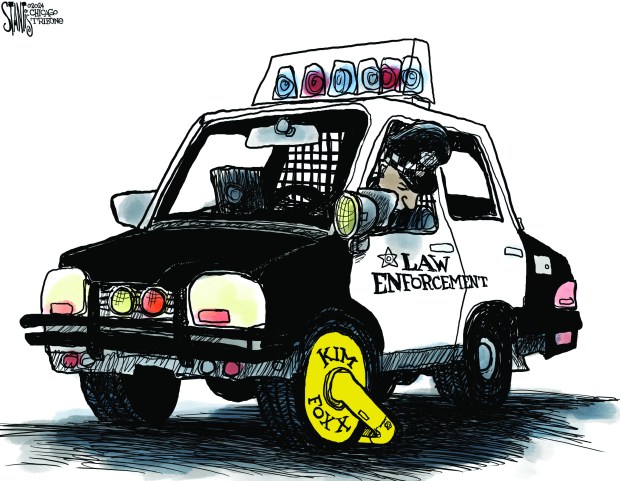The acronym MMA often translates to mixed martial arts, the sport that draws from jiu-jitsu, wrestling, karate and more. But in Chicago’s transit world, MMA may soon stand for the Metropolitan Mobility Authority, a unified entity that merges four transit agencies better known for kickboxing with each other.
A bit Orwellian a name for our tastes, the alliterative moniker comes from the Metropolitan Mobility Authority Act, a bill introduced in Springfield by state Sen. Ram Villivalam and state Rep. Eva-Dina Delgado, both Chicago Democrats, and designed to combine the Regional Transportation Authority (RTA), the CTA, Metra and Pace.
We’re longtime fans of government efficiencies, of course, and on the surface this looks like a no-brainer. Clearly, there’s an argument for having one entity with a broader mandate to consider the transit needs of this interconnected region and thus capable of finding a broader swath of political support for its needs. People think of the CTA as serving only the city, but its buses go beyond and its trains can take you to Cicero, Wilmette, Evanston, Skokie, Rosemont, Oak Park and Forest Park, although residents of that last suburb sure have been waiting a long time of late for their Blue Line train.
Similarly, Metra is thought of as a suburban operation, but almost a third of its nearly 250 stations are actually in Chicago.
Right now, the CTA, Metra and Pace operate mostly separately with discreet fair systems (aside from the Regional Connect Pass), route maps and very limited coordination of services. One of the main arguments against the coming CTA Red Line extension, for example, is that service on the nearby Metra could potentially have been expanded and beefed up for hundreds of millions of dollars less. But historically, people have not thought like that around here. In London, the smash transit hit is the spiffy new Elizabeth Line, which, if viewed in Chicago terms, is essentially a Metra train that could also move into tunnels and travel on CTA rails. What an idea!
Here, of course, there are no such big plans. The primary job of Metra’s current board is to worry about Metra, not whether or not the CTA can get you to any of their trains. In many parts of the city, such as the Ravenswood neighborhood, Metra and the CTA have nearby stations, but little thought has been given to help people connect at them: Take, for example, Metra’s Clybourn station, where two of its busiest lines intersect but no CTA train goes close. And, of course, since transit always relies on government funding, these entities inevitably compete with each other when they come with their caps in hand before the state and the feds.
The other argument for change is that the whole shebang is in crisis, even beyond the well-documented issues involving safety, so-called ghost trains and huge headways (schedule gaps) on the CTA.
“Ridership is projected to increase to 349 million trips in 2024, but this is just 62% of the ridership level of 562 million in 2019,” Chicago’s Civic Federation noted in its sobering recent report on this issue. “The transit agencies face an estimated $730 million deficit beginning in 2026 after federal pandemic relief funds are depleted. This represents approximately 20% of the system’s operating budget and will continue to grow unless it is addressed.”
The verb the business community’s government watchdog uses in regard to this untenable situation and change? “Impels.”
The report does allow that one viable choice here might be to keep some separate boards with one overseeing entity, but it clearly argues that the best idea is a single, integrated board.
Unsurprisingly, there has been resistance from the agencies and other constituencies. There are several powerful fiefdoms potentially under threat: Currently, the Tribune reported, 47 board members across the existing agencies are appointed by 21 elected officials. Stunning. Some board members get paychecks too.
Beleaguered CTA chief Dorval Carter Jr. has pushed back against all of this, but that’s not especially relevant, given that it’s generally agreed that he needs to be replaced, anyway. Unhelpfully, Carter has argued that the problems outlined by the Civic Federation are a consequence of a lack of funding flowing his agency’s way, rather than the truth, which is that such public funding, necessary as it might be, has to be accompanied by an improvement in managerial efficiency. We’ve been on that train for a long time. Everyone knows the CTA currently is a mess, whatever Carter might say. And that’s largely why this issue has moved top of mind in Springfield.
We agree that this is an emergency situation, given the importance of the CTA in Chicago, and if this deal helps wrestle some power away from Carter and gives the CTA better and more independent oversight, that’s a major argument in its favor. Mayor Brandon Johnson has so far shown no enthusiasm for making that vital change.
That said, there is a valid counterargument that you don’t change an entire structure just to get rid of bad leadership. Under this plan, Chicago would lose control of its crucial CTA, and some transit advocates have pointed out that whereas the CTA buck stops now at the mayor, theoretically, the new entity would have no such clear path of accountability. And, of course, having such a combined board does not necessarily mean that all of the desired reforms mentioned above will actually happen.
There are no inherent guarantees. Nor would there be assurances of unity: Disagreements between city and suburban advocates might well still happen with all the resulting dysfunction. And while we’re fans of fast suburban trains, it’s also true that the dense urban areas are the most dependent on public transit and that the CTA’s problems are distinct.
So before Springfield makes this move, legislators should carefully debate and consider these issues and craft something that protects Chicago interests and has decent assurances of success. In the meantime, as we and others have already said, Johnson should replace Carter.
If he does not, he might find greatly diminished transit clout coming up the track from Springfield. He’d have only himself to blame.
Submit a letter, of no more than 400 words, to the editor here or email letters@chicagotribune.com.




